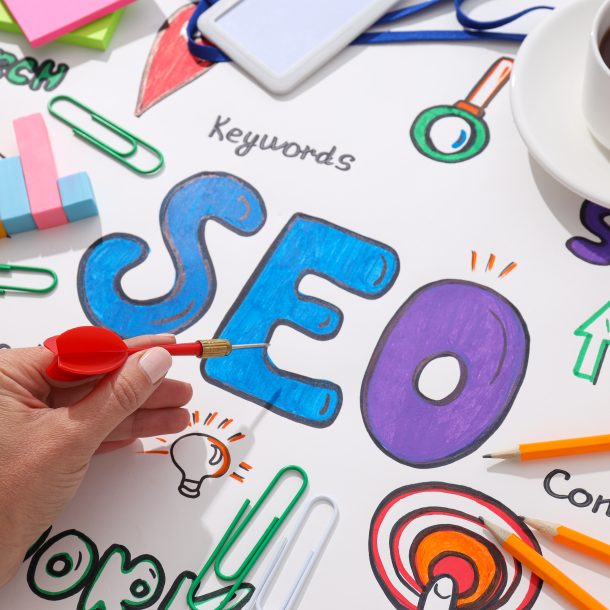
Designing for Conversion: How to Create High-Converting Landing Pages
In the digital landscape, designing for conversion is more critical than ever. A high-converting landing page can be the difference between a successful campaign and a missed opportunity.
This article will guide you through the essential elements, best practices, common pitfalls, and tools necessary to create landing pages that convert.
Understanding Designing for ConversionWhat is Designing for Conversion?
Designing for conversion encompasses the strategic approach to crafting web pages that not only attract visitors but also compel them to take the desired action, whether it’s making a purchase, signing up for a newsletter, or downloading a resource.
The ultimate goal is to increase the conversion rate, which is the percentage of visitors who complete the desired action.
Importance of Designing for Conversion in Digital Marketing
The significance of designing for conversion in digital marketing cannot be overstated. A well-designed landing page can lead to:
- Increased Sales: By guiding visitors through a seamless journey, you can turn prospects into customers.
- Improved ROI: Higher conversion rates mean more revenue per visitor, maximizing your marketing investment.
- Better User Experience: A clear, intuitive design enhances user satisfaction, leading to repeat visits and brand loyalty.
How Conversion Rate Impacts Business Success
A higher conversion rate directly impacts the bottom line. Here are a few ways it influences business success:
- Revenue Growth: More conversions translate to higher sales and revenue.
- Cost Efficiency: Improved conversion rates reduce the cost per acquisition, making your marketing efforts more efficient.
- Competitive Advantage: Businesses with optimized landing pages have a significant edge over competitors who don’t prioritize conversion design.
By understanding the fundamentals of designing for conversion, you can create landing pages that not only capture attention but also drive meaningful actions. Now, let’s delve into the key elements that constitute a high-converting landing page.
Essential Elements of a High-Converting Landing Page
Creating a high-converting landing page involves more than just an attractive design. It requires a careful blend of elements that work together to guide the visitor towards the desired action. Below are the essential components every high-converting landing page should have.
Compelling Headline
Importance of a Strong Headline
The headline is the first thing visitors see when they land on your page. It’s your first opportunity to grab their attention and convey the essence of your offer. A compelling headline can significantly impact your conversion rate.
Tips for Writing an Effective Headline
- Be Clear and Specific: Ensure your headline clearly communicates what the landing page is about.
- Use Power Words: Words like “free,” “exclusive,” “guaranteed” can make your headline more persuasive.
- Address the Visitor’s Pain Points: Speak directly to the problems or desires of your target audience.
- Keep it Concise: Aim for a headline that is easy to read and understand at a glance.
Clear and Concise Value Proposition
Explanation of Value Proposition
Your value proposition tells visitors why they should choose your product or service over others. It’s a promise of the value they will receive, and it should be clear, concise, and compelling.
How to Communicate Value Clearly
Highlight Unique Benefits: What sets your offer apart from the competition?
- Use Specifics: Instead of vague claims, provide specific benefits or features.
- Showcase Results: If possible, include statistics or case studies that demonstrate the effectiveness of your offer.
Strong Call to Action (CTA)
Definition of a CTA
A Call to Action (CTA) is a prompt that encourages visitors to take a specific action, such as “Buy Now,” “Sign Up,” or “Download.” It’s a crucial element in driving conversions.
Examples of Effective CTAs
- “Get Started Today”: Invites immediate action.
- “Claim Your Free Trial”: Offers something valuable for free.
- “Join Our Community”: Creates a sense of belonging.
Trust Signals and Social Proof
Importance of Building Trust
Trust is a key factor in conversion. Without trust, visitors are unlikely to take the desired action, no matter how compelling your offer is.
Types of Trust Signals
- Testimonials: Positive feedback from satisfied customers.
- Reviews: Ratings and reviews from users.
- Certifications: Industry certifications or awards.
- Case Studies: Detailed accounts of how your product or service has helped others.
Visual Elements and Media
Role of Images, Videos, and Graphics in Conversion
Visual elements can significantly enhance the appeal and effectiveness of your landing page. They help convey information quickly and can make your page more engaging.
Best Practices for Using Visual Media
High-Quality Images: Use professional, relevant images that support your message.
- Explainer Videos: Short videos explaining your offer can boost understanding and engagement.
Infographics: Visual representations of data or processes can make complex information easier to digest.

Best Practices for Designing High-Converting Landing Pages
To get high conversion rates, you need more than key elements. Following best practices is important for improving user experience and making your landing page more effective.
Here are some key best practices to consider.
Simplified and Focused Design
Importance of Simplicity in Design
A messy and complicated design can confuse visitors and take away from the main goal of the landing page.
Simplicity makes the page look better and helps focus the visitor’s attention on the important parts.
Tips for Maintaining Focus on the Main Objective
- Limit Distractions: Remove any unnecessary elements that do not contribute to the conversion goal.
- Use White Space: White space can help make the page look clean and organized.
- Single Call to Action: Focus the visitor’s attention on a single, clear call to action.
Mobile Optimization
Importance of Mobile-Friendly Design
It’s important to make sure your landing page works well on mobile devices because more people are using them. A mobile-friendly design ensures a seamless experience, regardless of the device being used.
Tips for Optimizing Landing Pages for Mobile Devices
- Responsive Design: Ensure your landing page adjusts seamlessly to different screen sizes.
- Fast Load Times: Mobile users expect fast-loading pages. Optimize images and reduce unnecessary code to improve speed.
- Easy Navigation: Simplify navigation for mobile users with clear buttons and links.
Fast Loading SpeedImpact of Loading Speed on Conversion Rates
Slow loading times can significantly affect your conversion rates. Visitors are likely to abandon a page that takes too long to load, leading to higher bounce rates and lost opportunities.
Tips for Improving Page Speed
- Optimize Images: Use compressed images to reduce load times.
- Minify CSS and JavaScript: Remove unnecessary code to streamline your website.
- Use a Content Delivery Network (CDN): A CDN can help speed up the delivery of your content to users around the world.
A/B Testing and Optimization
Explanation of A/B Testing
A/B testing, or split testing, involves comparing two versions of a webpage to see which one performs better. This method allows you to make data-driven decisions to optimize your landing page for conversions.
Best Practices for Running A/B Tests
- Test One Element at a Time: Focus on a single element, such as the headline or CTA, to understand its impact.
- Use Sufficient Sample Size: Ensure you have enough data to determine statistical significance.
- Analyze Results: Use the results to make informed decisions on what changes to implement.
Common Mistakes to Avoid in Designing for Conversion
Even with the best intentions, certain common mistakes can hinder your landing page’s ability to convert visitors effectively. Recognizing and avoiding these pitfalls can significantly enhance your conversion rates.
Overcomplicating the Design
Consequences of Complex Designs
A complex design can overwhelm visitors and obscure your main message. When faced with too many choices or visual clutter, users may experience decision fatigue, leading to higher bounce rates and lower conversions.
How to Keep It Simple
- Minimalist Approach: Focus on essential elements and remove anything that doesn’t contribute to the conversion goal.
- Clear Hierarchy: Use a clear visual hierarchy to guide visitors through the page.
- Consistent Design: Maintain consistency in fonts, colors, and button styles to create a cohesive experience.
Ignoring Mobile Users
Importance of Catering to Mobile Users
Mobile traffic makes up a large part of web visits. Not optimizing for mobile can result in a bad user experience and lost sales. Mobile users expect fast, easily navigable pages that work seamlessly on their devices.
Common Pitfalls in Mobile Design
Non-Responsive Design: A page that doesn’t adjust to different screen sizes can frustrate mobile users.
- Slow Load Times: Mobile users are less patient with slow-loading pages.
- Difficult Navigation: Small buttons or complex menus can make navigation challenging on mobile devices.
Weak Call to Action
Signs of an Ineffective CTA
A weak Call to Action (CTA) can be vague, hidden, or unappealing, leading to missed conversion opportunities. Signs of an ineffective CTA include low click-through rates and high bounce rates.
How to Strengthen Your CTA
- Be Clear and Direct: Use action-oriented language that clearly tells visitors what to do.
- Make it Stand Out: Use contrasting colors and larger font sizes to make the CTA button stand out.
- Create Urgency: Phrases like “Limited Time Offer” or “Act Now” can encourage immediate action.
Avoiding these mistakes helps you make a better landing page that is easier to use and increases conversion rates.
Tools and Resources for Designing High-Converting Landing Pages
Having the right tools and resources at your disposal can make the process of designing high-converting landing pages more efficient and effective. Below, we explore some of the best design tools, analytics platforms, and conversion rate optimization resources available.
Design Tools
Overview of Popular Design Tools
- Adobe XD
- Features: Adobe XD offers a comprehensive suite of tools for designing wireframes, prototypes, and complete user interfaces.
- Benefits: Integrates seamlessly with other Adobe products, making it a versatile tool for designers.
- Pricing: Offers a free starter plan, with premium plans starting at $9.99/month.
- Sketch
- Features: Known for its vector-based design capabilities, Sketch is popular for creating UI/UX designs.
- Benefits: Simple interface and extensive plugin ecosystem.
- Pricing: Requires a one-time payment of $99 per year.
- Figma
- Features: Figma is a cloud-based design tool that facilitates real-time collaboration.
- Benefits: Allows multiple designers to work on the same project simultaneously.
- Pricing: Offers a free plan, with professional plans starting at $12/month.
Analytics and Testing Tools
Tools for Analytics and A/B Testing
- Google Analytics
- Features: Tracks and reports website traffic and user behavior.
- Benefits: Provides detailed insights into how visitors interact with your landing page.
- Pricing: Free, with premium features available in the Google Analytics 360 Suite.
- Optimizely
- Features: Offers A/B testing, multivariate testing, and personalization tools.
- Benefits: Helps you experiment with different design elements to find what works best for conversions.
- Pricing: Custom pricing based on business needs.
- Hotjar
- Features: Provides heatmaps, session recordings, and user feedback tools.
- Benefits: Allows you to see where users click, how they scroll, and what they ignore.
- Pricing: Offers a free basic plan, with premium plans starting at $39/month.
Conversion Rate Optimization (CRO) Resources
Blogs, Courses, and Books on CRO
Blogs
- ConversionXL: Offers in-depth articles, case studies, and research on CRO.
- Neil Patel’s Blog: Features actionable tips and strategies for increasing conversions.
Courses
- CXL Institute: Provides comprehensive courses on various aspects of CRO.
- Udemy: Offers numerous courses on landing page optimization and CRO techniques.
Books
- “Conversion Optimization” by Khalid Saleh and Ayat Shukairy: A practical guide to increasing website conversions.
- “Don’t Make Me Think” by Steve Krug: Focuses on usability principles that can enhance user experience and conversions.

Case Studies: Examples of High-Converting Landing Pages
Learning from real-world examples can provide valuable insights into what makes a landing page successful. We look at two examples of successful landing pages that used effective design strategies to increase conversions.
Case Study 1: Unbounce
Overview of the Project
Unbounce, a leading landing page builder, aimed to create a landing page to promote their webinar on conversion rate optimization. The goal was to maximize registrations and attendance.
Key Design Elements and Their Impact on Conversion
- Compelling Headline
- Implementation: The headline clearly stated the webinar’s value: “Learn How to Double Your Conversion Rates in Just One Hour.”
- Impact: The clear, benefit-oriented headline immediately captured the audience’s attention.
- Strong Value Proposition
- Implementation: The subheadline emphasized what attendees would gain: “Join industry experts as they share actionable insights and strategies.”
- Impact: Clearly communicated the unique benefits, increasing perceived value.
- Effective CTA
- Implementation: The CTA button read “Save My Seat,” creating a sense of urgency and exclusivity.
- Impact: The inviting and action-oriented CTA led to a significant increase in click-through rates.
- Trust Signals
- Implementation: Included testimonials from previous webinar attendees and logos of well-known companies that use Unbounce.
- Impact: Built credibility and trust, making visitors more likely to register.
Results
Conversion Rate: The landing page achieved a conversion rate of 45%, significantly higher than the industry average.
- Registrations: Over 1,500 registrations within the first week of the campaign.
Case Study 2: Airbnb
Overview of the Project
Airbnb designed a landing page to attract new hosts during a promotional campaign. The goal was to encourage property owners to sign up and list their homes on the platform.
Key Design Elements and Their Impact on Conversion
- Compelling Headline
- Implementation: The headline read, “Earn Money as an Airbnb Host.”
- Impact: Clearly communicated the primary benefit, appealing directly to the target audience’s financial motivation.
- Clear and Concise Value Proposition
- Implementation: The value proposition highlighted the ease of getting started and the potential earnings: “List your space in just a few steps and start earning today.”
- Impact: Simplified the process, making it seem accessible and appealing.
- Visual Elements
- Implementation: Used high-quality images of beautiful homes and happy hosts.
- Impact: Created an aspirational appeal, showing what potential hosts could achieve.
- Trust Signals and Social Proof
- Implementation: Included testimonials from successful hosts and statistics showing average earnings.
- Impact: Reinforced credibility and demonstrated real-world success.
Results
Conversion Rate: The landing page achieved a conversion rate of 30%, which was a 20% increase from previous campaigns.
- New Hosts: Over 10,000 new hosts signed up within the first month.
Conclusion: Mastering the Art of Designing for Conversion
Designing for conversion is a multifaceted process that requires a strategic approach, attention to detail, and continuous optimization.
To create effective landing pages, focus on key elements, follow best practices, avoid mistakes, and use the right tools. This will help attract visitors and turn them into loyal customers.
Recap of Key Points Discussed
- Understanding Designing for Conversion:
- Importance and impact of conversion-focused design on digital marketing and business success.
- Essential Elements of a High-Converting Landing Page:
- Compelling headlines, clear value propositions, strong CTAs, trust signals, and effective visual elements.
- Best Practices for Designing High-Converting Landing Pages:
- Simplified design, mobile optimization, fast loading speed, and A/B testing.
- Common Mistakes to Avoid:
- Overcomplicating design, ignoring mobile users, and having weak CTAs.
- Tools and Resources:
- Design tools, analytics, testing platforms, and CRO resources to enhance your landing page design process.
- Case Studies:
- Real-world examples of successful landing pages from Unbounce and Airbnb, demonstrating the practical application of conversion design principles.
Final Thoughts on the Importance of Designing for Conversion
In today’s competitive digital landscape, merely attracting visitors to your website is not enough. The true measure of success lies in your ability to convert those visitors into customers or leads.
Good landing page design is important. By learning how to design for conversion, you can make the most of your marketing and reach your business goals.
Encouragement to Apply Best Practices and Continuous Testing
Remember, the journey to creating high-converting landing pages is ongoing. Continually test, analyze, and optimize your designs to keep improving your conversion rates. Stay informed about the latest trends and best practices in conversion rate optimization, and don’t be afraid to experiment with new ideas.
By applying the insights and strategies discussed in this article, you can take your landing pages to the next level and drive more conversions than ever before.
Frequently Asked Questions
What is a good conversion rate for a landing page?
A good conversion rate can vary depending on the industry and the specific goals of the landing page. However, a general benchmark is around 2-5%. High-performing landing pages can achieve conversion rates of 10% or higher.
How often should I update my landing page design?
It’s a good practice to regularly review and update your landing page design based on performance data. Try running A/B tests regularly to find ways to improve and keep the design up-to-date and engaging.
Can I use the same design for all my landing pages?
While you can use a consistent design language across your landing pages, it’s important to tailor each page to its specific audience and goal. Customizing the content and layout based on the campaign can lead to better results.
How do I measure the success of my landing page?
Key metrics to measure the success of your landing page include conversion rate, bounce rate, average time on page, and click-through rate. Use tools like Google Analytics and specialized CRO platforms to track and analyze these metrics.
What are the most common reasons for high bounce rates?
High bounce rates can be caused by several factors, including slow loading times, poor mobile optimization, unclear messaging, and lack of compelling CTAs. Addressing these issues can help reduce bounce rates and improve conversions.
What is a Good Conversion Rate for a Landing Page?
A good conversion rate for a landing page varies by industry and the specific goals of the page. However, a general benchmark is around 2-5%. High-performing landing pages, especially those optimized continuously, can achieve conversion rates of 10% or higher. It’s essential to compare your rates with industry standards and continuously strive for improvement through testing and optimization.
How Often Should I Update My Landing Page Design?
Regularly updating your landing page design is crucial to maintain relevance and effectiveness. Consider the following guidelines:
- Quarterly Reviews: Conduct A/B testing and performance reviews every three months.
- Campaign-Specific Updates: Update the design and content for special promotions or seasonal campaigns.
- Continuous Optimization: Make small, incremental changes based on user feedback and performance data to keep the page optimized.
Can I Use the Same Design for All My Landing Pages?
It’s important to have a consistent design for your landing pages. However, each page should be tailored to its specific audience and purpose. Customizing content and layout based on the campaign or target audience can lead to better results. For example:
- Different Headlines: Use specific headlines that address the unique pain points or desires of each segment.
- Varied CTAs: Tailor your call to action to align with the specific offer or goal.
How Do I Measure the Success of My Landing Page?
Measuring the success of your landing page involves tracking key metrics and analyzing performance data. Here are the primary metrics to consider:
- Conversion Rate: The percentage of visitors who complete the desired action.
- Bounce Rate: The percentage of visitors who leave the page without interacting.
- Average Time on Page: Indicates how engaged visitors are with your content.
- Click-Through Rate (CTR): The percentage of visitors who click on your CTA.
- Heatmaps and Session Recordings: Tools like Hotjar can provide visual insights into user behavior.
What Are the Most Common Reasons for High Bounce Rates?
High bounce rates can be caused by several factors, including:
- Slow Loading Times: Visitors are likely to leave if the page takes too long to load.
- Poor Mobile Optimization: A non-responsive design can frustrate mobile users.
- Unclear Messaging: If visitors don’t understand the value proposition quickly, they are likely to leave.
- Lack of Compelling CTAs: Without clear and enticing calls to action, visitors may not know what to do next.
- Distracting or Cluttered Design: Overly complex designs can overwhelm visitors and detract from the main goal.
By addressing these common issues, you can reduce bounce rates and enhance overall user experience, leading to higher conversions.
Ready to Boost Your Conversions?
You’ve learned about the essential elements, best practices, common pitfalls, and tools necessary to create high-converting landing pages. Now it’s time to put this knowledge into action. Apply these strategies, test different approaches, and continuously optimize to see significant improvements in your conversion rates.
Good luck, and happy designing!
Read More: Strategic SEO for Local Businesses








